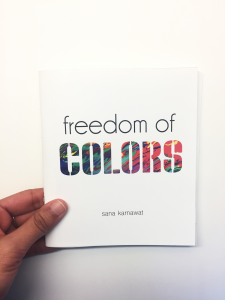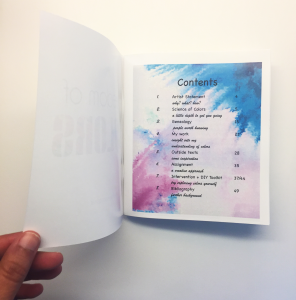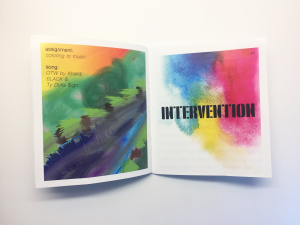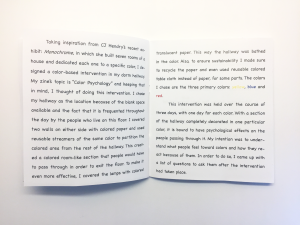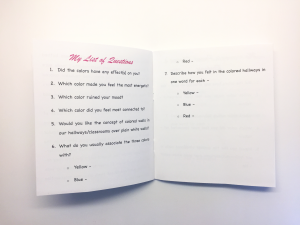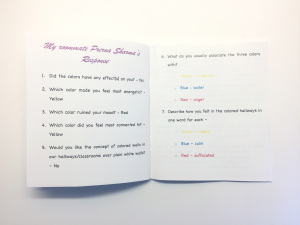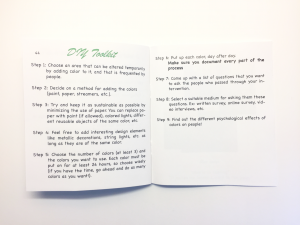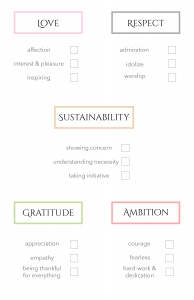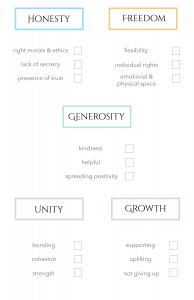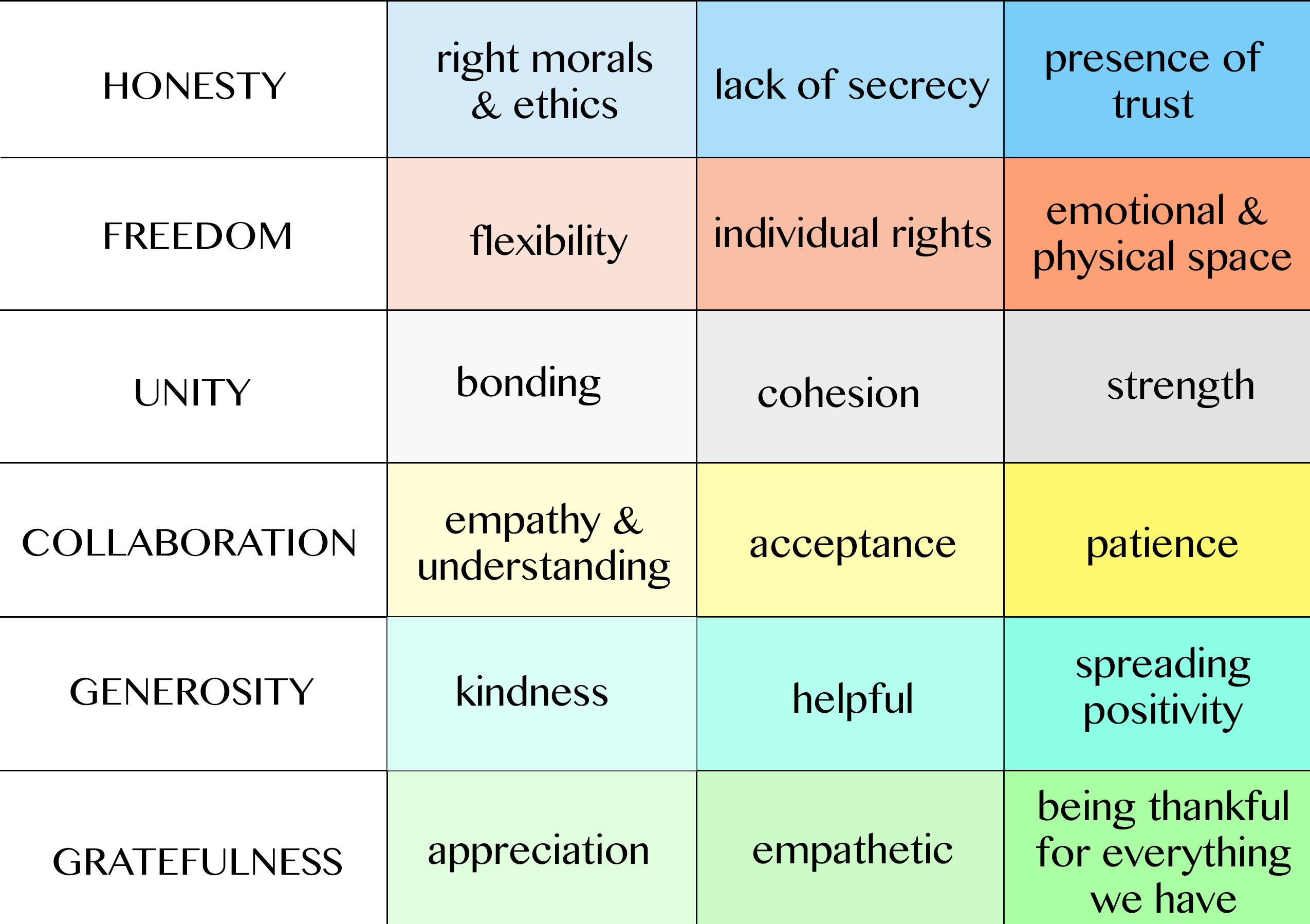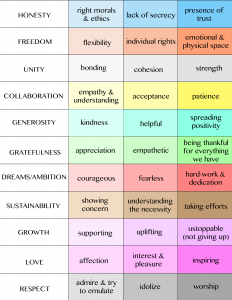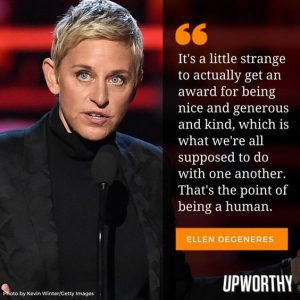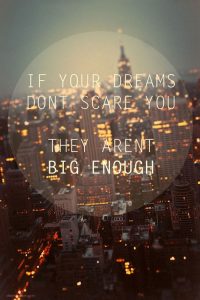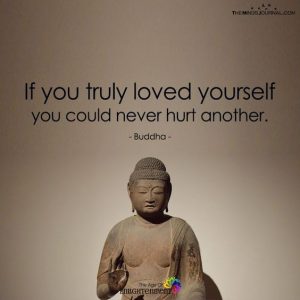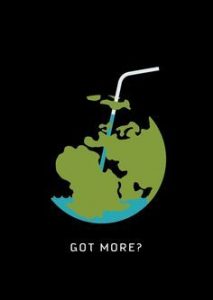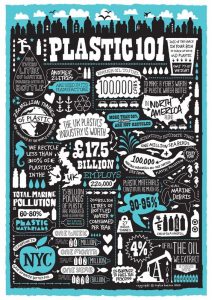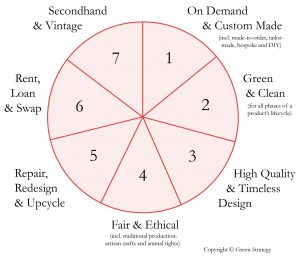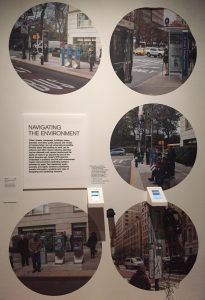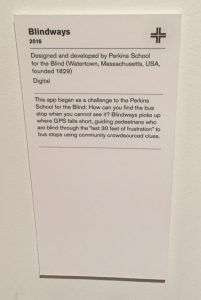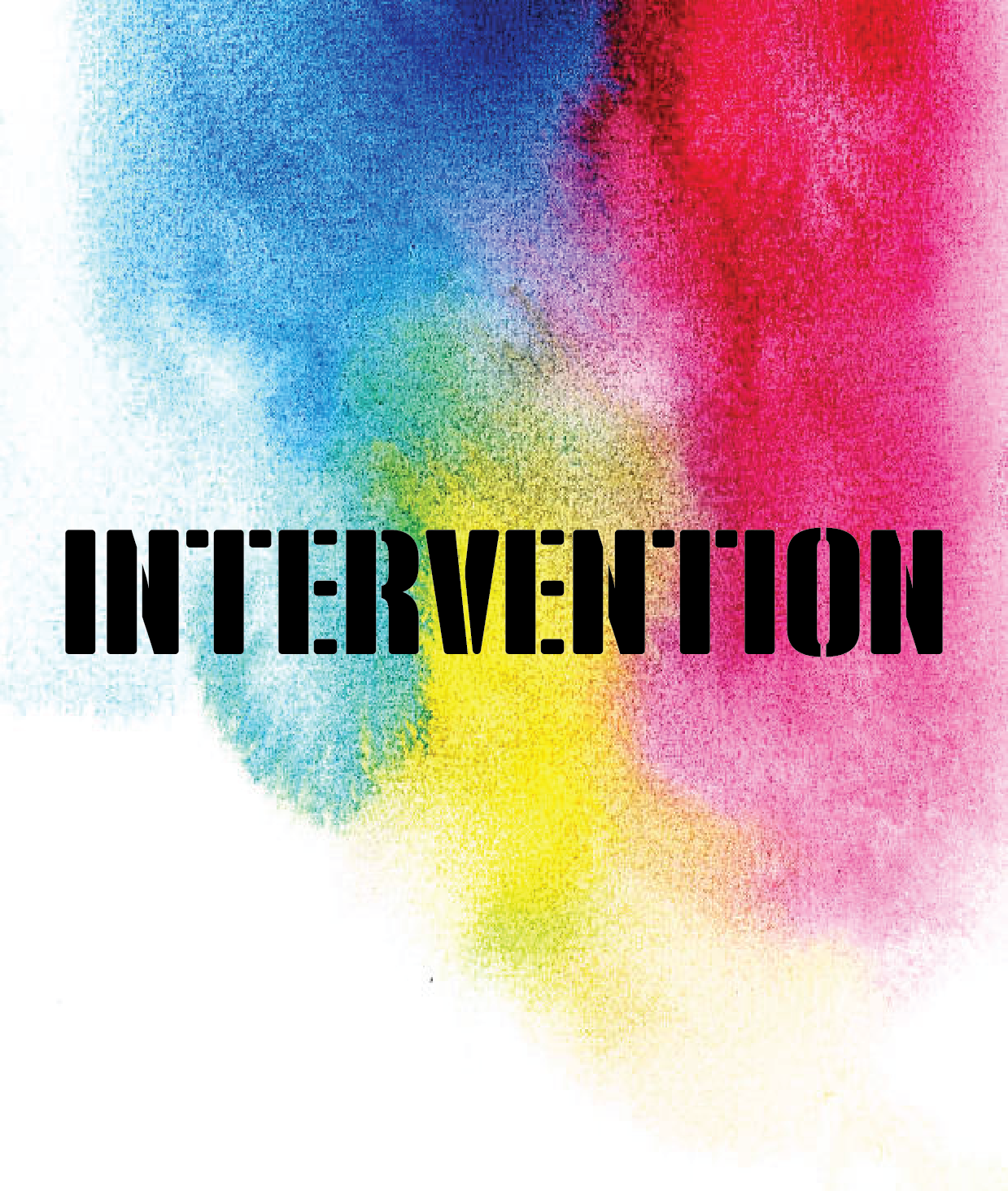
Summary
Taking inspiration from CJ Hendry’s recent exhibit: Monochrome, in which she built seven rooms of a house and dedicated each one to a specific color, I designed a color-based intervention in my dorm hallway. My zine’s topic is “Color Psychology” and keeping that in mind, I thought of doing this intervention. I chose my hallway as the location because of the blank space available and the fact that it is frequented throughout the day by the people who live on this floor. I covered two walls on either side with colored paper and used reusable streamers of the same color to partition the colored area from the rest of the hallway. This created a colored room-like section that people would have to pass through in order to exit the floor. To make it even more effective, I covered the lamps with colored translucent paper. This way the hallway was bathed in the color. Also, to ensure sustainability I made sure to recycle the paper and even used reusable colored table cloth instead of paper in some areas. The colors I chose are the three primary colors: yellow, blue and red.
This intervention was held over the course of three days, with one day for each color. With a section of the hallway completely decorated in one particular color, it is bound to have psychological effects on the people passing through it. My intention is to understand what people feel towards colors and how they react because of them. I came up with a list of questions to ask my fellow students who passed through the hallway every day.
My List of Questions
- Did the colors have any effect(s) on you?
- Which color made you feel most energetic?
- Which color ruined your mood?
- Which color did you feel most connected to?
- Would you like the concept of colored walls in our hallways/classrooms over plain white walls?
- What do you usually associate the three colors with?
- Yellow –
- Blue –
- Red –
- Describe how you felt in the colored hallways in one word for each –
- Yellow –
- Blue –
- Red –
Some Responses
Prerna Sharma
- Did the colors have any effect(s) on you? – Yes
- Which color made you feel most energetic? – Yellow
- Which color ruined your mood? – Red
- Which color did you feel most connected to? – Yellow
- Would you like the concept of colored walls in our hallways/classrooms over plain white walls? – No
- What do you usually associate the three colors with?
- Yellow – sunshine
- Blue – water
- Red – anger
- Describe how you felt in the colored hallways in one word for each –
- Yellow – happy
- Blue – calm
- Red – suffocated
Shivani Aggarwal
- Did the colors have any effect(s) on you? – Yes
- Which color made you feel most energetic? – Yellow
- Which color ruined your mood? – Blue
- Which color did you feel most connected to? – Red
- Would you like the concept of colored walls in our hallways/classrooms over plain white walls? – Yes please
- What do you usually associate the three colors with?
- Yellow – happiness and joy
- Blue – heavy
- Red – lively but harmful
- Describe how you felt in the colored hallways in one word for each –
- Yellow – motivated
- Blue – running away
- Red – dramatic
Anvita Shah
- Did the colors have any effect(s) on you? – Yes
- Which color made you feel most energetic? – Yellow
- Which color ruined your mood? – Red
- Which color did you feel most connected to? – Yellow/Blue
- Would you like the concept of colored walls in our hallways/classrooms over plain white walls? – Yes
- What do you usually associate the three colors with?
- Yellow – sunshine
- Blue – water
- Red – anger
- Describe how you felt in the colored hallways in one word for each –
- Yellow – cheerful
- Blue – calm
- Red – frustrated
Amaya Avila
- Did the colors have any effect(s) on you? – Maybe
- Which color made you feel most energetic? – Yellow
- Which color ruined your mood? – Red
- Which color did you feel most connected to? – Blue
- Would you like the concept of colored walls in our hallways/classrooms over plain white walls? – Yes
- What do you usually associate the three colors with?
- Yellow – happy, excited
- Blue – calm
- Red – angry
- Describe how you felt in the colored hallways in one word for each –
- Yellow – energetic
- Blue – peaceful
- Red – stressed
Reflection
Executing this intervention was a demanding task because of the labor it required. Luckily, I’m blessed with wonderful roommates and neighbors who were of great help throughout the setting-up process. When I started the process, I didn’t expect it to take as long as it did. I also had to make sure not to come in anyone’s way, which was quite difficult because of the scale of my intervention. However, as I was putting up my craft, most of the students passing by asked me questions and had positive responses. That motivated me and reassured my nerves about doing something this large. The answers I got to my list of questions were very close to the ones I expected. Yellow made everyone feel happy and warm, blue was calming while red really aggravated their frustration. The reactions I got toward red were quite extreme as I came home one day to find the paper and streamers completely torn and left on the floor. At first, I was deeply upset, but later it hit me that this is exactly what red makes one do. It angers people. I was extremely glad to see how the colors affected people and how their responses were in accordance with my research.
If I had to do anything differently, I would try using different objects of the same color and organize them in a similar way as mentioned above. I would want to eliminate the use of paper completely. Something reusable is a much better option. Also, since I noticed quite a few students using my sectionalized area as backdrops for photoshoots, I would want to set it up in a more organized and clean manner and maybe design it in a way that can be used as a photo booth or “Instagram spot” in the future.
I have always been intrigued by colors and their effects on people. Color psychology has been of interest to me for a very long time. I love attending exhibits related to this topic. I aspire to create a large-scale public installation on the theme of colors someday. This small intervention taught me a lot and I believe it is a great first step to my journey in this field.
Documentation of Intervention – https://drive.google.com/open?id=1iwzjLlY7yKtUj6ljZGBFfh9JPIydUCkX
Zine Documentation
Zine –
